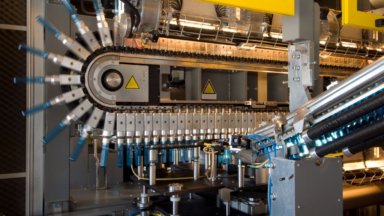By: Sumit Mukherjee – Chief Technology Officer of PTI
The advent of Industry 4.0 in the packaging sector signals that the latest digital technology tools are being deployed, creating a rapidly evolving landscape. While technological innovations have been prevalent in most aspects of our daily life, packaging industry enterprise activities—including molders, fillers and packers—have been less data driven.
Tightening of quality standards and a drive towards sustainability is making data more critical for decision making. Automation is being increasing used to process large amounts of data, provide trends and mark out the outliers. To meet sustainability requirements, packaging initiatives began with lightweighting, followed by the introduction of recycled content and the development of biodegradable polymers. This led to a number of innovations in aseptic filling, high pressure processing, large cavitation molding, blow filling, nitrogen dosing, active bases, deeper grips and ergonomic branded shapes. These production techniques can benefit from digital technology and its related data to improve efficiencies and increase effectiveness.
Old machines receive a new lease on life as they become retrofitted with modern computer control and feedback technology. Processing machines are now able to provide real time data shot by shot, cavity by cavity of various parameters that are critical for making good quality parts in a narrower specification window. We in the midst of a digital age where data is used to discern trends and tackle problems before they manifest themselves.
The data acquisition technologies have improved via high resolution cameras along with transducers that look at processing attributes like injection or blow pressure profiles. Additional sensors can monitor part weight, thickness distribution, defects in sealing surface or pin holes in parts due to contamination. The data is now transferred from the machine to nimble computers that analyze and send instructions to robots. Parts that do not meet specifications are ejected without human intervention.
Want to read more? Click here to read the full article featured on Plastics Today.
